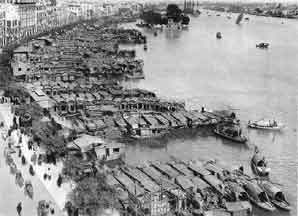1946 Chinese Civil War Resumes
Upon the surrender of Japan which concluded World War II, war once again broke out between the Communists and the Nationalists in China. Attempts were made to come to an agreement, but all efforts failed. By the beginning of 1946, full-scale fighting had developed between the two sides. Initially,
the war went well for the Nationalists.
When World War II ended with Japan's surrender in August 1945, the uneasy truce between the KMT and the CPC quickly unraveled. Both sides rushed to fill the power vacuum left by the Japanese withdrawal, leading to sporadic clashes.
Efforts were made to foster a peaceful resolution. Notably, the United States, which had supported the KMT during World War II, sent General George Marshall to China to mediate between the two parties. In 1946, a ceasefire was agreed upon, and talks were held to form a coalition government.
However, deep-seated mistrust and ideological differences made the negotiations extremely difficult. The ceasefire was short-lived, and by the spring of 1946, full-scale fighting had resumed. This marked the beginning of the main phase of the Chinese Civil War.
In the initial stages, the Nationalists appeared to have the upper hand. They possessed a numerical advantage in terms of soldiers and were better equipped, having inherited a significant amount of military equipment from the Japanese and receiving aid from the United States. They managed to secure control over major cities and communication lines, pushing Communist forces into remote rural areas.
However, this initial advantage didn't last. The Nationalists suffered from numerous issues, including poor morale, corruption, economic instability, and a lack of popular support. In contrast, the Communists had a well-organized, disciplined force, and their promises of land reform won them significant support among the rural population. The tide of the war gradually turned in favor of the Communists over the next few years.
 >
>